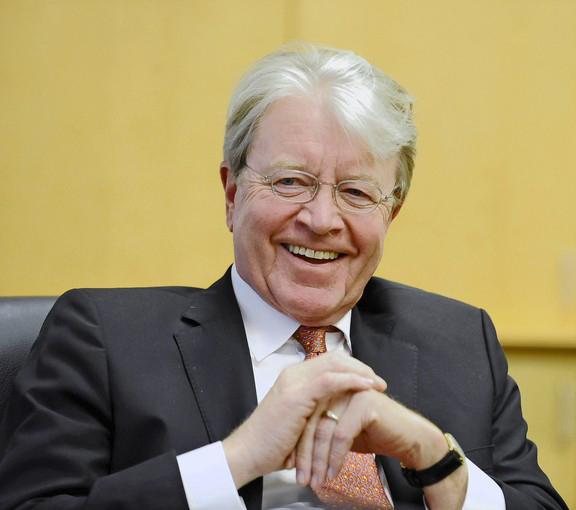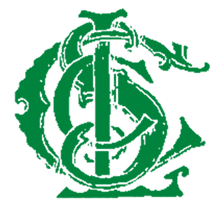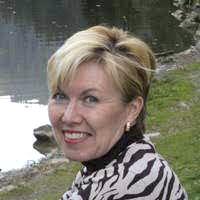Ransom, resale and collateral for loans are the primary reasons for the theft of art, antiquities and archaeological artifacts. For more than 40 years, art crime has been the third-highest-grossing criminal trade globally. Only drugs and weapons rank higher.
Considered a victimless crime in the United States, art theft is tolerated here more than it is in Europe, where art fraud law enforcement units are considerably larger. Little is known about the scope and nature of this form of criminal activity because only about 5 to 10 percent of stolen art is recovered.
Last season, Boston Globe journalist Stephen Kurkjian spoke about the world’s greatest art heist — when in 1990, thieves absconded with 13 masterpieces valued at more than $500 million from the Isabella Stewart Gardner Museum — from the perspective of a reporter; this summer, Chautauquans have the opportunity to hear about art theft from the up-close-and-personal, behind-the-scenes perspective of a seasoned museum official.
At 3 p.m. Saturday in the Hall of Philosophy, Gary Vikan will share his inside knowledge about “inside jobs,” as part of the Chautauqua Women’s Club’s Contemporary Issues Forum program, sharing things about museums that are not normally revealed to the public.

An internationally recognized medieval scholar, Vikan retired as the director of Baltimore’s famed Walters Art Museum in 2013 to write, lecture, teach and provide consulting services for museums, museum directors and trustees, collectors and art dealers. He now specializes in the intersection of the arts and the sciences, also known as neuroaesthetics.
His choice of topic was sparked somewhat by Kurkjian’s book — Master Thieves: The Boston Gangsters Who Pulled Off the World’s Greatest Art Heist — and by the Hall of Philosophy’s open-air setting, where slides and other visuals are not shown.
“Most people have a little piece of their brain that says ‘Gardner’ on it and now another with ‘Hobby Lobby,’ ” Vikan said. “I think people are much more informed now about the hubbub around cultural property — who owns the past, where museums fit in. The world is turned on its head weekly.”
In early July, Hobby Lobby agreed to return more than 5,500 artifacts (including rare and valuable ancient clay cuneiform tablets) that were smuggled out of Iraq in packages with labels falsely identifying Turkey as their country of origin, and ended up in its retail outlets. It also agreed to forfeit $3 million to the U.S. government.
“I did work for Hobby Lobby for about three days,” Vikan said. “(Hobby Lobby President) Steve Green was just exposed on the 5th of July. In 2013, I was asked to give him my advice and he didn’t take it. … Go figure. I’ve seen this before and been through it.”
Vikan’s memoir, Sacred and Stolen: Confessions of a Museum Director, was published last year by SelectBooks.
Sacred and Stolen is not Vikan’s first book. He is currently working on his 13th. Most recently, From Holy Land to Graceland and Postcards from the Walters came out in 2012, and the updated version of Early Byzantine Pilgrimage Art in 2010.
“The business of publishing books and novels is no way to make a living,” he said. “It has to be meaningful to people and you have to do a good job.”
As a child growing up in the northern Minnesota town of Fosston, it was National Geographic magazine’s images that fascinated Vikan far more than its words. Titian’s “Venus with a Mirror” mesmerized him. He learned as a Carleton College sophomore taking an introductory course on ancient-to-medieval art history that he had a facility for recalling and writing about slide images of art and architecture.
Although as a child he had become a “fallen-away Lutheran,” Vikan said that he was drawn to medieval art, and to trying to capture the divine and being in the presence of God.
While earning his Ph.D. in art history, Vikan specialized in the medieval and Byzantine periods.
“The reason I got into Byzantine was because my professor at Princeton was the world leader,” he said. “I had to learn Greek at (age) 24, and he was the best of the best and I wanted to be like him.”
In July and again in August 1974, while Vikan was still at Princeton, Turkey invaded Cyprus, occupied 40 percent of the Mediterranean island, and formed a de facto autonomous Turkish Cypriot administration. Cyprus was partitioned at the ceasefire line, and the United Nations established a buffer zone known as the Green Line that remains today.
“It so happened when I got my Ph.D. that the churches were being looted in the wake of the Turkish invasion of ’74,” Vikan said. “The world was awash in looted antiquities that I’d studied, from the whole area of Northern Cyprus.”
For three years, Vikan served as a senior associate at Harvard’s Center for Byzantine Studies at Dumbarton Oaks in Washington, D.C., which had a long and close association with Cyprus.
In presentations and his memoir, he tells two “kind of strange” stories about Cyprus in which he played a central role. He said they are jaw-dropping for their absurdity and resemble the Hobby Lobby case remarkably.
Vikan left Dumbarton Oaks to serve for nine years as assistant director for curatorial affairs and curator of medieval art, aka chief curator, at the Walters Art Gallery (later “Museum”) in Baltimore, and for 19 years as the museum’s director. There, he curated critically acclaimed exhibitions, including those focusing on the art of medieval Orthodoxy.
Among his many endeavors at the Walters, Vikan changed the name from “Gallery” to “Museum”; led the contextual installation of the museum’s ancient, medieval and 19th-century collections; assembled the finest Ethiopian art collection outside Ethiopia; provided open access to its substantial digital assets; hosted a weekly radio program, “Postcards from the Walters,” on Baltimore’s NPR affiliate, WYPR, and facilitated the endowment of nearly two dozen positions and the establishment of an exhibition fund.
One of the bigger challenges encountered in shifting from academic scholarship to a museum is the puzzlement of transforming from an academic who has holed up for seven to 10 years to focus on an obscure area, to a curator who must talk to people who have never heard of it. Vikan likened museum staff to an orchestra or choir, in which one only succeeds with others, and an academic to a soloist.
“I have seen many people run aground because soloists are challenged by working in a team of very disparate people,” he said. “You’re only as good as your effect on the audience. They — versus your professor — own your ‘grade.’ I cared passionately about what people said when they walked out of exhibitions. It’s like theater. You’ve got to keep it simple. You need a message. This is not education. You have to meet people where they are and be attentive.”
Vikan said he is proudest of making the museum free to all in 2006. The $12 general admissions fee had excluded too many people. The Walters father and son, William and Henry, made the largest public bequest ever made in the United States.
“They gave it to the city of Baltimore for its citizens,” Vikan said. “It is publicly owned. It seemed to me that any dollar threshold in a city that is 65 percent African-American was a problem. The public needs access to it. I would challenge any art museum to figure out how to run it for free.”





